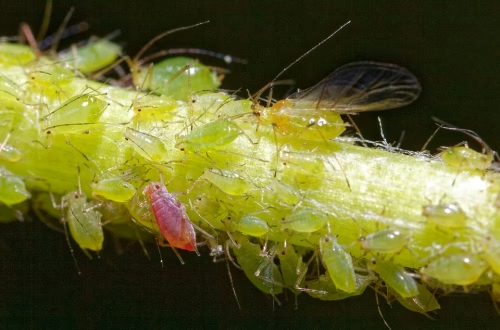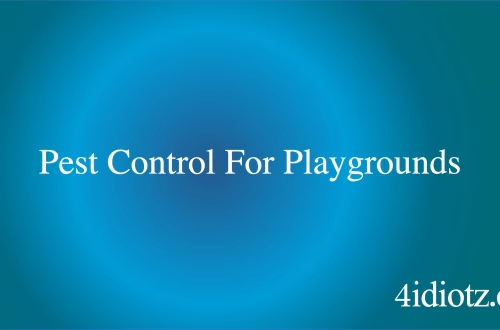Summary:
Commercial kitchen pest control is essential for maintaining hygiene, compliance, and reputation in the food service industry. This article explores effective pest management strategies, common pest issues, and the risks of neglecting pest control. Business owners, managers, and staff in restaurants, hotels, and catering services are directly impacted. Adhering to federal and state regulations while implementing proactive measures ensures a safe environment, prevents legal issues, and safeguards customer trust.
What This Means for You:
- Proactive pest control prevents costly fines and business closures.
- Implementing regular inspections and sanitation protocols reduces pest infestations.
- Choosing a specialized pest control service ensures compliance with industry standards.
- Ignoring pest issues can lead to severe health risks and reputational damage over time.
Commercial Kitchen Pest Control Explained:
Commercial kitchen pest control refers to the systematic management and eradication of pests in food preparation and storage areas. It involves identifying, preventing, and eliminating pests such as rodents, insects, and other vermin that pose a threat to food safety and hygiene. This process is critical for businesses to comply with health regulations, maintain operational efficiency, and protect their reputation.
Pest control in commercial kitchens goes beyond simple extermination. It includes preventive measures like sealing entry points, proper waste management, and regular inspections. By addressing the root causes of pest problems, businesses can create a safer environment for employees and customers while avoiding costly disruptions.
Types of Pest Issues:
Commercial kitchens are susceptible to various pests due to the availability of food, water, and shelter. Common pests include cockroaches, rodents, flies, and ants. Cockroaches, for instance, can carry bacteria like Salmonella, while rodents can contaminate food and damage infrastructure. Flies are notorious for spreading diseases, and ants can invade stored food products.
Federal and state laws, such as those enforced by the Food and Drug Administration (FDA) and local health departments, mandate strict pest control measures. Non-compliance can result in fines, closures, or legal action. Understanding the specific pest risks in your region is crucial for developing an effective management plan.
For example, in warmer climates, flying insects like fruit flies are more prevalent, requiring specialized traps and screens. In contrast, colder regions may face challenges with rodents seeking warmth. Tailoring your pest control strategy to your location and type of kitchen is essential for success.
Common Pest Control Methods:
Effective pest control in commercial kitchens involves a combination of preventive and reactive measures. Regular inspections by trained professionals help identify early signs of infestations. Sealing cracks, installing screens, and maintaining clean storage areas are key preventive steps.
For active infestations, methods like baiting, trapping, and targeted pesticide use are effective. Integrated Pest Management (IPM) is a widely recommended approach that minimizes chemical use by focusing on habitat modification and monitoring. For example, using pheromone traps for insects or ultrasonic devices for rodents can reduce reliance on harmful chemicals.
Successful strategies also include staff training on hygiene practices and prompt reporting of pest sightings. By fostering a culture of cleanliness and awareness, businesses can significantly reduce pest-related risks.
Risks and Consequences:
Ignoring pest control in commercial kitchens can lead to severe consequences. Health risks include food contamination, which can cause illnesses and outbreaks. This not only harms customers but can also result in lawsuits and legal penalties.
Financial risks are equally significant. A single pest sighting can damage a business’s reputation, leading to lost revenue and customer trust. Additionally, repeated violations of health codes may result in fines or forced closures, disrupting operations and impacting long-term profitability.
Environmental risks also exist, as some pests can damage infrastructure, such as gnawing through electrical wires or contaminating water supplies. Addressing pest issues promptly is crucial for maintaining a safe and functional kitchen environment.
Choosing a Pest Control Service:
Selecting the right pest control service is vital for effective management. Look for providers with specialized experience in commercial kitchens, as these environments require unique solutions. Check for certifications and licenses to ensure compliance with industry standards.
Consider the provider’s approach to pest control. A reputable service will offer customized plans based on your kitchen’s specific needs. They should also emphasize preventive measures and provide ongoing support, such as regular inspections and staff training.
Ask for references or case studies to gauge their track record. A reliable pest control service will prioritize safety, efficiency, and customer satisfaction, ensuring your kitchen remains pest-free and compliant.
People Also Ask About:
- What are the most common pests in commercial kitchens?
- How often should I schedule pest control inspections?
- Are pesticides safe to use in food preparation areas?
- What preventive measures can I take to reduce pest infestations?
- How can I choose the best pest control service for my kitchen?
What are the most common pests in commercial kitchens? Cockroaches, rodents, flies, and ants are the most common pests in commercial kitchens due to the availability of food and water. Each poses unique challenges and requires specific control methods.
How often should I schedule pest control inspections? Monthly or quarterly inspections are recommended, depending on the size of your kitchen and the severity of pest issues. High-risk areas may require more frequent monitoring.
Are pesticides safe to use in food preparation areas? When used correctly by licensed professionals, pesticides can be safe. However, Integrated Pest Management (IPM) methods that minimize chemical use are often preferred in food preparation areas.
What preventive measures can I take to reduce pest infestations? Seal entry points, maintain cleanliness, store food properly, and dispose of waste promptly. Regular staff training on hygiene practices is also essential.
How can I choose the best pest control service for my kitchen? Look for licensed, experienced providers with a proven track record in commercial kitchens. Customized plans, preventive measures, and ongoing support are key factors to consider.
Expert Opinion:
Effective pest control in commercial kitchens is not just about eliminating pests but preventing them from becoming a problem in the first place. Businesses must adopt a proactive approach, combining regular inspections, staff education, and specialized pest management strategies. Ignoring these measures can lead to severe health, financial, and reputational consequences. Staying informed and partnering with experienced professionals is the best way to ensure a safe and compliant kitchen environment.
Related Key Terms:
- commercial kitchen pest control services
- integrated pest management for restaurants
- pest prevention in food service industry
- FDA pest control regulations for kitchens
- safe pesticide use in commercial kitchens
- restaurant pest inspection frequency
- best pest control for commercial kitchens
Pest Control Disclaimer
This content is for educational purposes only and does not replace professional pest inspection, treatment, or safety advice. Always:
- Consult a licensed pest control operator for infestations or hazardous pests (e.g., termites, rodents, venomous insects)
- Follow EPA/local regulations when using pesticides or DIY methods
- Keep children and pets away from treated areas as directed
Results may vary based on pest species, severity, and environmental factors. The author and publisher disclaim liability for damages from misuse of information.
*Featured image sourced by Pixabay.com




